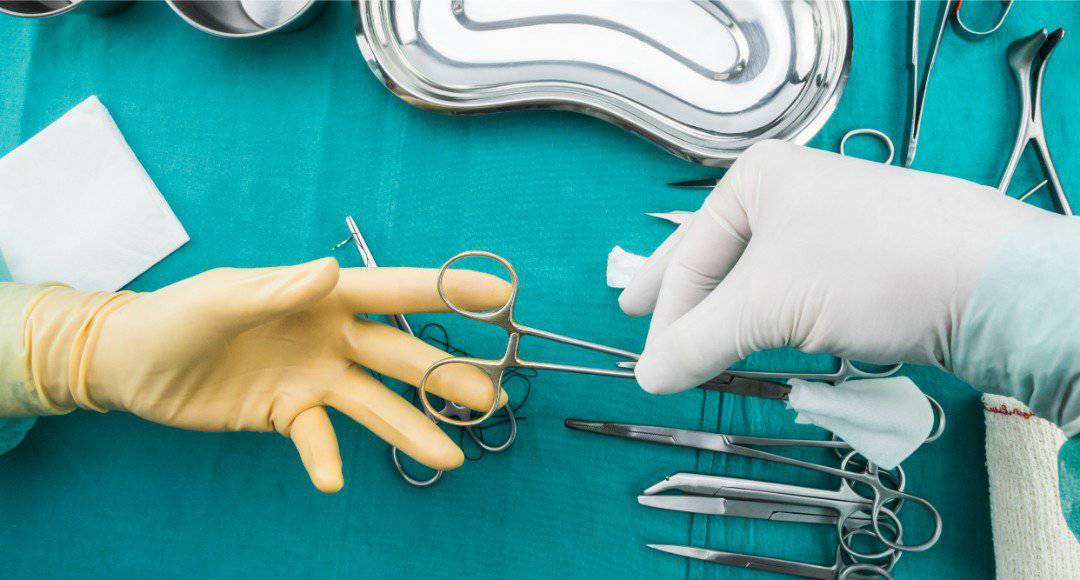Hiatal hernia, also known as gastric hernia, is a common condition where the stomach protrudes through the diaphragm into the chest cavity. The frequency of this condition increases with age, with over 70% of patients over 70 years old having this condition.
Symptoms of Hiatal Hernia
There are sliding (axial) and mixed (paraesophageal) hernias.
In sliding hiatal hernias, patients usually complain of symptoms such as heartburn (a burning sensation behind the breastbone) of varying intensity.
In contrast, large mixed (paraesophageal) hernias, due to their size, lead to mechanical symptoms such as shortness of breath (due to space occupation in the chest cavity), palpitations, fatigue, while incarcerated hernias can cause nausea, vomiting, food retention after meals.
Diagnosis of Hiatal Hernia
Patients with hiatal hernia should first be referred for a contrast radiograph with barium. During the examination, the patient drinks contrast, and on X-ray, it is visible how the contrast fills the esophagus first, then passes from the esophagus into the stomach, thereby showing the position of these organs in relation to the diaphragm. After that, patients need to undergo gastroscopy (upper gastrointestinal endoscopy) to assess the mucosa of the esophagus and stomach, exclude other possible diseases, and find objective indicators of the presence of gastric reflux, such as inflammation of the distal esophagus. In cases of suspected gastroesophageal reflux disease, diagnostics should be supplemented with pH monitoring. This examination allows us to accurately measure the time during which gastric (acidic) content is present in the esophagus.
A special group of patients complains of so-called extraesophageal symptoms resembling hoarseness of voice, persistent cough, throat discomfort, and feeling of a lump in the throat. With this group of patients, a detailed conversation with the completion of precise evaluation questionnaires is necessary. The examination in this group of patients must be supplemented by an examination by an ENT specialist who will evaluate the condition of the upper respiratory tract.
Treatment of Hiatal Hernia
It is necessary to carefully identify groups of patients who respond best to therapy. By assessing the response to drug therapy, it is possible to determine which patients can benefit most from the performed surgery.
Indications for surgical treatment of hiatal hernia include:
- Patients who are not motivated for lifelong intake of proton pump inhibitors
- Patients with confirmed Barrett’s esophagus or severe esophagitis
- Patients with persistent severe symptoms despite the use of optimal medical therapy
Hiatal Hernia Laparoscopy
The gold standard in the treatment of the above-mentioned esophageal diseases is minimally invasive surgery.
Laparoscopy is a technique for accessing the abdominal cavity through small incisions in the abdominal wall ranging from 5 to 12mm. Through specially made working channels (ports), and with the help of elegant instruments and a camera with a magnification of 5 to 10 times, we can access every part of the abdominal cavity and chest, adequately identify and solve the problem. These small incisions, compared to conventional surgeries, provide the opportunity for rapid recovery, reduce the risk of infection, allowing a return to regular activities within a few days. The advantage of the camera with magnification reduces the possibility of error in experienced hands to a minimum and allows the observation of the smallest details during the procedure.
How is the surgery performed?
The hiatal hernia operation involves returning the stomach from the chest cavity to its physiological position in the abdomen, after which the diaphragm with an enlarged opening is reconstructed with sutures. The surgery usually continues with the recreation of the mechanism (wrap – fundoplication) around the distal esophagus to prevent gastric acid reflux into the esophagus. At the end of the operation, under camera control, a drain is placed in the abdomen, as well as a nasogastric tube, which has a relieving role on the stomach until it regains its full function.
What is the recovery like after surgery?
The nasogastric tube is usually removed on the first day after surgery, while the abdominal drain usually remains until the second postoperative day depending on the content being evacuated. On the day of surgery, we encourage patients to stand up and walk with or without assistance. Water intake begins on the first day after surgery, while diet usually starts on the second or third day after surgery depending on the patient’s tolerance. Discharge from the hospital can be expected from the third to the fifth postoperative day. The stitches are removed 10 to 12 days after surgery, while a follow-up appointment with the surgeon is advised one month after surgery.
Postoperative Indications for Hiatal Hernia
Hiatal hernia surgery requires adjustment by the patient, and a diet based on mushy and mashed food is recommended for 3 weeks after surgery. We advise patients to maintain a constant body weight without excessive weight gain. It is also forbidden to lift heavy loads, over 5% of the patient’s body weight, for the next 6 months after surgery.
